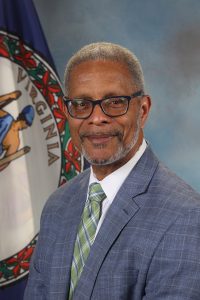
by James C. Sherlock
(updated Jan. 20 at 2 PM)
Today I have assessed the Centers for Medicare/Medicaid Services COVID-19 Nursing Home Dataset to determine the deadliest nursing homes in Virginia measured by COVID death rate of residents from Jan 1, 2020, through Jan. 3, 2021.
The results are profoundly disturbing at several levels. There are 120 columns in that CMS data. I report here only a few data points.
Virginia’s deadliest nursing homes measured by resident COVID deaths per thousand residents since Jan. 1, 2020 as of January 3, 2021 were:
The Woodlands Health and Rehab Center
Clifton Forge
815.8 COVID deaths/1,000 residents
Current occupancy rate 63%.
The Jefferson
Arlington
600 COVID deaths/1,000 residents
Current occupancy rate 32%.
Arleigh Burke Pavilion
McLean
562.5 COVID deaths/1,000 residents
Current occupancy rate 65%.
Bayside of Poquoson Health and Rehab
Poquoson
523.8 COVID deaths/1,000 residents (7 deaths the week of Jan. 3)
Current occupancy rate 70%.
Francis Marion Manor Health & Rehabilitation
Marion
404.3 COVID deaths/1,000 residents (3 deaths the week of Jan. 3)
Current occupancy rate 46%.
Heritage Hall Clintwood
Clintwood
400 COVID deaths/1,000 residents, current occupancy rate 70%. This facility has the distinction of the highest number of residents confirmed with COVID 19 in the last year in this group of nursing homes – 77 – with 100 beds.
Loudoun Nursing and Rehab Center
Leesburg
391.3 COVID deaths/1,000 residents
Current occupancy rate 35%.
Greensville Health and Rehabilitation Center
Emporia
357.1 COVID deaths/1,000 residents, current occupancy rate 65%. Even at 65% occupancy, this facility reports shortage of nursing staff.
The Virginian
Fairfax
357.1 COVID deaths/1,000 residents (1 death the week of Jan. 3)
Current occupancy rate 59%.
Pulaski Health and Rehab Center
Pulsaski
326.9 COVID deaths/1,000 residents
Current occupancy rate 51%.
Pelican Health Norfolk
Norfolk
307.7 COVID deaths/1,000 residents (4 deaths the week of Jan. 3)
Current occupancy rate 65%. Even at 65% occupancy, this facility reports shortage of nursing staff.
Galax Health and Rehab
Galax
301.6 COVID deaths/1000 residents
Current occupancy rate 53%.
There are 25 more Virginia nursing homes with 200 or more COVID deaths/1,000 residents. These are, from highest death rate to lowest are:
THE NEWPORT, Newport News
MOUNT VERNON HEALTHCARE CENTER, Alexandria
HERITAGE HALL BIG STONE GAP, Big Stone Gap
SOUTH BOSTON HEALTH & REHAB CENTER, South Boston
NEWPORT NEWS NURSING & REHAB, Newport News
NOVA HEALTH AND REHAB, Weber City
RADFORD HEALTH AND REHAB CENTER, Radford
LEE HEALTH AND REHAB CENTER, Pennington Gap
CHATHAM HEALTH & REHABILITATION CENTER, Chatham
OUR LADY OF THE VALLEY, Roanoke
ASHBY PONDS INC, Ashburn
SKYVIEW SPRINGS REHAB AND NURSING CENTER, Luray
BRANDON OAKS NURSING AND REHABILITATION CENTER, Roanoke
CONSULATE HEALTH CARE OF WOODSTOCK, Woodstock
SEASIDE HHC @ ATLANTIC SHORE, Virginia Beach
BON SECOURS-MARYVIEW NURSING Center, Suffolk
COLISEUM CONVALESCENT AND REHABILITATION CENTER, Hampton
LIFE CARE CENTER OF NEW MARKET, New Market
HILLSVILLE HEALTH & REHAB CENTER, Hillsville
ENVOY OF STAUNTON, LLC, Staunton
ACCORDIUS HEALTH AT NANSEMOND POINTE LLC, Suffolk
LEEWOOD HEALTHCARE CENTER, Annandale
THE LAURELS OF BON AIR, Bon Air
ENVOY AT THE VILLAGE, Fork Union
RALEIGH COURT HEALTH AND REHABILITATION CENTER, Roanoke.
Of those 25, Newport News Nursing & Rehab and Envoy of Staunton, LLC, reported nursing shortages on Jan. 3, 2021.
The highest Jan 3 2021 occupancy rate was 98% at Envoy at the Village, Fork Union; the lowest was 28% at The Newport, Newport News.
By total number of resident COVID deaths, not the rate of deaths, the top six are:
- South Boston Health & Rehab Center, 39 deaths
- Heritage Hall, Bill Stone Gap, 34 deaths
- The Woodlands Health and Rehab Center, Clifton Forge 31 deaths
- Friendship Health and Rehab Center, 29 deaths
- Heritage Hall Clintwood, 28 deaths
- Annandale Healthcare Center, 28 deaths
First observation – as far as I can tell this information is unavailable in the very useful CMS data format through the Virginia Department of Health website.
Second observation – all of these facilities are still open.
Third observation, Virginia is right in the middle of the rankings of the states and D.C. nursing home COVID deaths per 1000 residents at 58.5.
That value varies from New Jersey’s 124.2 and Massachusetts’ 121.7 to Vermont’s 13.1 and Alaska’s 12.0. Since that figure strips out the variables in resident populations it is a valid comparison.
Perhaps the Health Commissioner can tell us:
- whether any nursing home has been shut down by the Virginia Department of Health or local health authorities since the onslaught of COVID. If not why not?
- when each of these nursing homes was last inspected?
- when this vital consumer information will be available on the VDH website in this usable, nationally comparable format?

Leave a Reply
You must be logged in to post a comment.